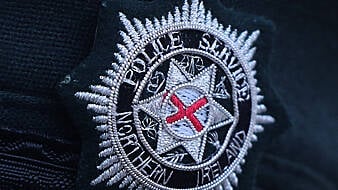A "floridly psychotic" man believed there was a "homosexual conspiracy" in Cloverhill Prison when he scalded a cellmate with hot water before strangling him, a Central Criminal Court trial has heard.
The Central Criminal Court heard that Michael Connolly (55), originally from Louth, believed that Mark Lawlor (37), from Drumcondra, had “some kind of exalted identity like a king” and was "a kingpin of Dublin" when he killed him in a cell in the prison on November 23rd 2019.
Mr Connolly has pleaded not guilty to the murder of Mr Lawlor by reason of insanity.
Conspiracy
The jury also heard that Mr Connolly believed there was “a homosexual conspiracy” between the prisoners and prison officers, and two psychiatrists will give evidence that he was suffering from an active mental disorder at the time.
Outlining the facts of the case, counsel for the prosecution Tony McGillicuddy SC said that the incident took place in Cloverhill Prison on the night of Friday, November 22nd 2019, into the early hours of Saturday, November 23rd.
He said that Mr Lawlor and Mr Connolly had both been remanded to the prison on unconnected matters and the two men were sharing a cell.
Mr McGillicuddy said that at 11.34pm on the night, a call light was activated by prisoners in the adjoining cell, who heard a scuffle and someone calling out “Davey” or “David”. The prisoners thought it was Mr Lawlor, and he sounded hoarse, so they thought he was choking.
A prison officer responded and when he looked into the cell, he saw Mr Connolly on top of Mr Lawlor with his hands around his neck. The cell door was opened, and prisoner officers took Mr Connolly off Mr Lawlor. Mr Lawlor was pronounced dead at 12.55am.
Prison officer Adrian Richmond gave evidence to Mr McGillicuddy that when he looked into the cell, he saw Mr Connolly on top of Mr Lawlor.
“He looked up, and his eyes never blinked. I always remembered it was very strange,” said Mr Richmond, adding that Mr Connolly showed no reaction to the light of the prison officer’s torch shining into the cell, and he made no sound.
Mr Richmond said that Mr Connolly was very calm when he was removed from the cell by prison officers.
“It was unbelievable how calm he was. He was totally calm and didn’t resist in any way,” said the witness.
Colm Burke, an assistant chief prison officer, gave evidence that he saw Mr Lawlor lying on the bed with a chair across his chest and Mr Connolly lying across the chair with his hands around Mr Lawlor’s neck.
He said he saw blood smears on the window in the cell and on the wall, and directly under Mr Lawlor’s head was “a massive pool of blood”.
Injuries
Garda Inspector Darragh Kenny confirmed to Mr McGillicuddy that a post-mortem revealed that Mr Lawlor had sustained multiple superficial burns with blistering on his face, neck and arms, which were consistent with having been scalded by having boiling or hot water thrown at him.
There were two lacerations to the back of Mr Lawlor’s scalp, which may have been caused by a sharp edge such as his head being struck against the bar or leg of the bed. He suffered manual strangulation and straddling of the chest, causing asphyxia leading to death.
Detective Garda Ronan Coffey gave evidence to Fionnuala O’Sullivan BL, prosecuting, of the garda interviews with Mr Connolly, in which Mr Connolly said he thought Mr Lawlor was “a kingpin of Dublin”.
“I thought I would get revenge. I thought of boiling the kettle and pouring it over him; I thought it would be enough, but it escalated to murder. Cloverhill is as bad as Shawshank, they’re all at it,” the accused told gardaí.
Det Gda Coffey went on to confirm to defence counsel Michael Bowman SC, that Mr Connolly made references to the Norse god Odin and also references to the Catholic Church.
Mental health services
Consultant forensic psychiatrist Dr Stephen Monks gave evidence to Mr McGillicuddy that Mr Connolly’s first contact with the mental health services was in 2013, and he was assessed as being psychotic due to substance-induced psychosis.
Dr Monks said that Mr Connolly was again admitted to the mental health services in 2015 after he set fire to his own house, and on that occasion the diagnosis was schizophrenia. Dr Monks said that in 2019, the accused’s diagnosis was schizoaffective disorder.
Dr Monks gave evidence that following the killing of Mr Lawlor, Mr Connolly was assessed by a psychiatrist who said Mr Connolly had apparent thought disorder. Dr Monks said that his colleague Dr Brenda Wright said Mr Connolly presented as “floridly psychotic” at that time.
In his opening remarks to the jury, Mr McGillicuddy said that there was no dispute that the accused caused the death of Mr Lawlor, but the law recognises that someone may cause the death of a person but at that time they are suffering from a mental disorder and may not be held legally responsible.
Mr McGillicuddy said there was no dispute that Mr Connolly had a mental disorder at the time, and the jury will hear from Dr Monks for the prosecution and Dr Sally Linehan for the defence, who will both say the accused was actively suffering from a mental disorder at the time.
He said the real issue for the jury to consider is whether Mr Connolly is entitled to the special verdict of not guilty by reason of insanity or if they should find the accused guilty of manslaughter by reason of diminished responsibility.
Mr McGillicuddy said that Mr Connolly acknowledged that he had caused the death of Mr Lawlor. Mr McGillicuddy said that a psychiatrist said that Mr Connolly had delusional beliefs such as believing that the prisoners were in league with prison officers in “a homosexual conspiracy”.







